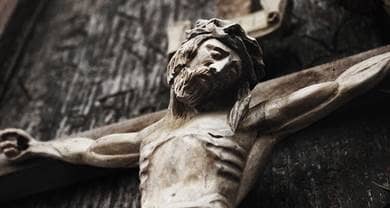- Trending:
- Pope Leo Xiv
- |
- Israel
- |
- Trump
- |
- Social Justice
- |
- Peace
- |
- Love

RELIGION LIBRARY
Roman Catholicism
Sacred Space
The great stone building is replete with carved figures and turrets of varying heights. Walking through the immense wooden doors takes you into a spacious, high-ceilinged interior designed to draw your eye to the center altar. Around the sides are a many small chapels, each with a statue of Jesus, Mary, or a saint, an altar and a collection of candles you can light. The stations of the cross, a collection of pictures or statues that tell the story of Jesus' suffering and death, wind around the room. The air itself is filled with colors from the light pouring in the stained glass windows. Ethereal, gorgeous, holy - this is what you see when you walk into one of the great Catholic cathedrals that dot the landscape in Europe and the Americas, and to a lesser extent in other areas of the world.
Catholics have historically spent a lot of time and effort creating and adorning their sacred spaces. The cathedrals are their grandest achievements, reaching to dizzying heights as they stretch toward the heavens, with St. Peter's Basilica in Vatican City standing head and shoulders above all others. It has the largest interior of any Christian church in the world and draws visitors from all nations and faith. For Catholics, St. Peter's is a central pilgrimage site, supposed to house the tomb of Jesus' apostle Peter and commonly (although mistakenly) regarded as the church home of the pope (another Roman church, the Basilica of St. John Lateran, is actually the papal cathedral church and houses the pope's throne).
Vatican City is itself a kind of sacred space, the world's smallest nation-state, autonomous from and yet surrounded by the city of Rome. It is the seat of government for the Roman Catholic Church, with the pope as its head-of-state. Its libraries, archives, and museums house an amazing patrimony of western civilization, bringing it about as close to a secular definition of sacred space as is possible.
Most Catholics do not worship in buildings of such grandeur as St. Peter's and the other great cathedrals. The parish church is the center of religious life for Catholics, the place where Mass is celebrated and sacraments are celebrated. It is also the place where children and adults receive religious education, and fairly often where children receive secular education as well. The churches mimic the cathedrals on a lesser scale, less ethereal and visually overwhelming but usually containing the same central focus on an altar where the Mass is celebrated, and often containing side chapels as well, with the same stations of the cross ringing the room.
The Catholic concept of sacred space is carried out into the world in many different ways. In countries with traditionally Catholic populations it is common to see roadside altars dedicated to the particular saint of the region, sacralizing a space not otherwise seen as sacred. This idea is taken into Catholic homes as well, which traditionally have a crucifix, a small statue of Jesus on the cross. Similarly, statues of Mary often adorn rooms, sometimes with small home altars and candles. All these devotions spring from the desire to carry sacred space beyond the walls of the church or monastery and out into the daily world of the believer.
At other times the daily world gives way as the Catholic believer seeks out sacred space on a pilgrimage. Pilgrimage is a concept that has played a large role in Catholic history. Believers have traversed vast distances to kneel at the feet of Marian statues, place their hands into miraculous waters, walk the streets that Jesus once walked, or gaze toward the heavens inside those gorgeous cathedrals - all places, Catholics believe, where the divine has broken through the veil of everyday experience. People have gone on pilgrimage as penance for sin, to fulfill promises to God and for the joy of seeing the sacred spaces. Their reasons for going may differ but the result each believer desires is the same: that he or she will experience the presence of God and the blessings that flow from it more fully than is possible in the normal spaces of their everyday lives.
In the Catholic worldview, the desire to make space holy gives way theologically to the understanding that all of space is already holy. Made by God in the beginning of time, the earth was also the scene of God's incarnation in the person of Christ, and of his death that redeemed humanity. The cosmic drama that unfolded before the creation of the world is set in a mythic space, and while the actual cosmos does not figure into the Christian drama - no sacred narrative is set on Venus or Mars, for example - Catholics uphold the belief that God created the entire universe and everything existing within it. What is more, we are told in the beginning of Genesis that as God was creating this particular earth, "he saw that it was good." The creation that surrounds humans was created by God, appraised good by God, and further sacralized by God's physical presence as a human. For Catholics there is no nook or corner that one can find in all of creation that is not holy.
Study Questions:
1. How is Catholic sacred space created through sensory perception?
2. Describe the relationship between cathedrals and parishes.
3. What is the role of relics in creating sacred space?
4. In what sense is all of space sacred?










